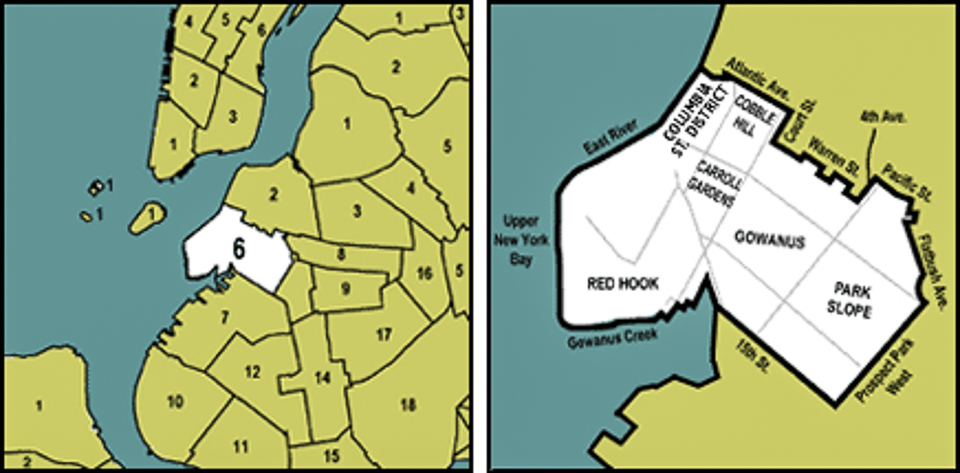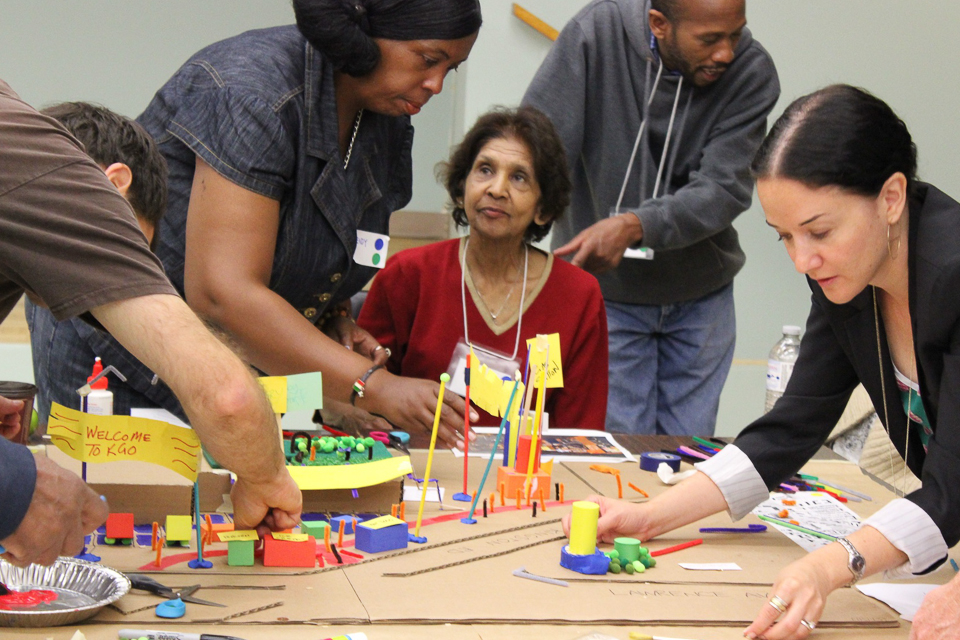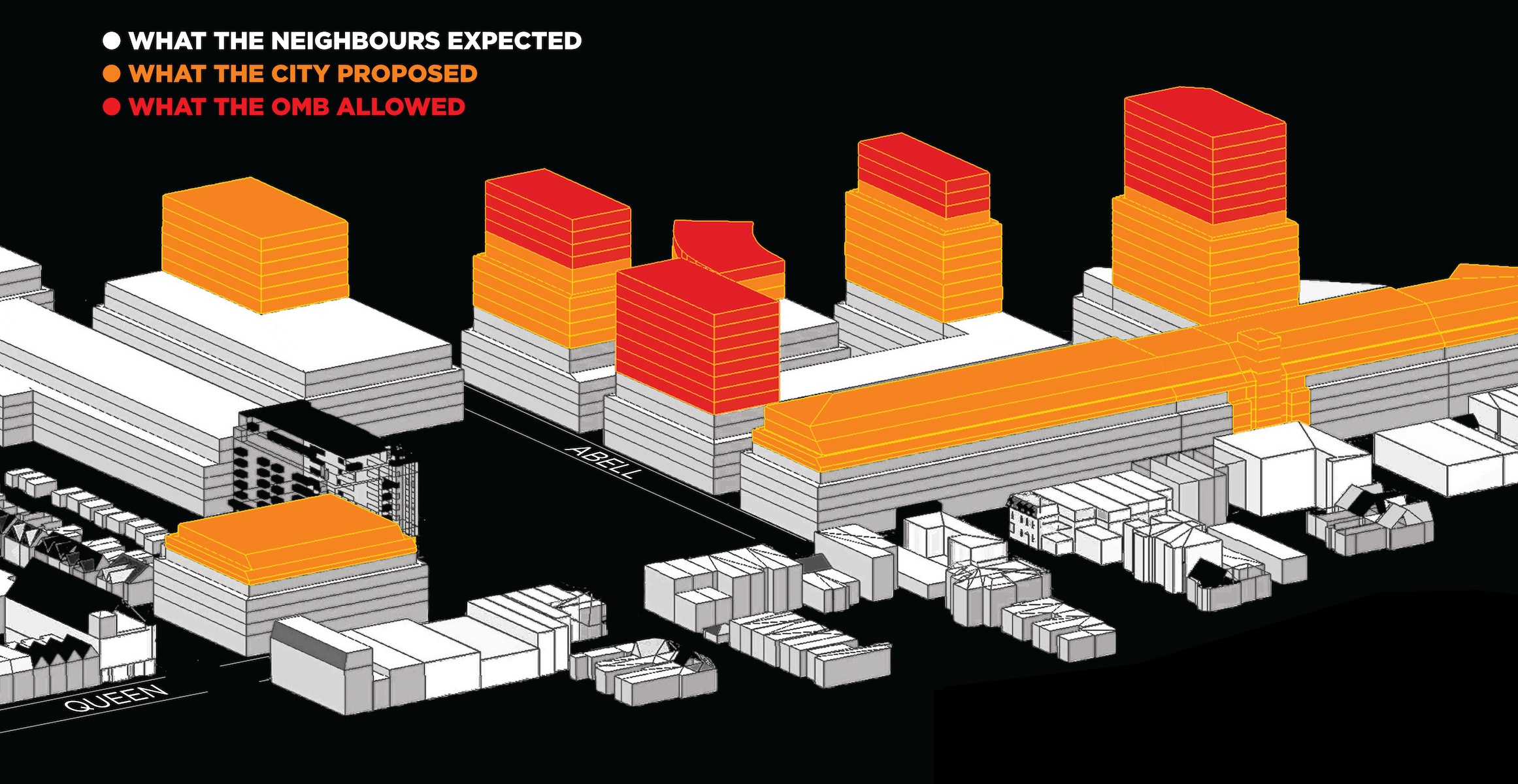(this is an article I wrote for UrbanToronto) Unprecedented building activity in the GTA coupled with the public’s frustration in engaging the development process is creating a shift towards participatory planning practices. Community Planning Boards may be a way to provide a conduit between the community and city government. The Centre for City Ecology (CCE) invited longtime Brooklyn civic leader Craig Hammerman to discuss the strengths and weaknesses of the Community Board model and provide insight into what might work in Toronto.
For over 20 years, Craig Hammerman has served as District Manager of Community Board 6 (CB 6), a diverse microcosm of NYC that represents 104,000 residents in a medium density community from Park Slope to Columbia Waterfront. He takes great pride in the work he does: empowering residents and advocating for the betterment of his district. Annabel Vaughan, the CCE’s interim director, summoned Hammerman because of his impressive track record. “He has created such a robust dialogue in that the community has a real say in community issues in the neighbourhood,” Vaughan said.
NYC is divided into 59 Community Districts. Each has its own distinct Community Board (CB), a concept established in 1975 that enables citizens to play an advisory role in their government. CBs are made up of 50 appointed volunteer board members – caring, committed people who represent a diverse range of perspectives and interests. Although getting a group of 50 to make a decision might seem like 'herding cats', parliamentary procedures in place facilitate the process. The CB hires a District Manager as the agency head and operates with a budget of $200,000 with little room for waste.
Aside from being the voice of their community, CBs monitor the delivery of city services, review land use, and are involved in budget formation. They are extremely effective at identifying capital needs in their districts because members live there and deal with the problems every day. All matters are sorted out in various topical committees (e.g. economic development, transportation, education) that meet monthly and report to the full board.
It is interesting to note how CBs intersect with the government. They are required to review and comment on applications to the Department of City Planning; however, as Hammerman emphasizes, “We are advisors – we make recommendations. We are not in a position to implement anything. We need to be as savvy as we can about influencing the decision-makers – that is really what it comes down to.”
Some boards are more effective at negotiating and at handling challenges than others. Fortunately, there is a collegiality among them and a sharing of best practices. In order to deal with each large-scale development proposal, CB 6 devised a Responsible Development Policy that is given to the applicant with instructions to address neighbourhood priorities (i.e. environmental standards) before it presents its case at the hearing. “The more we can anticipate, the more we can build into the process,” says Hammerman. Although they try to be proactive in the planning of their neighbourhoods, CBs are often too busy being reactive to the number of applications flooding in. (There are no planners on staff.)
Hammerman is focused on improving the workings of the board by reviewing: composition criteria; recruitment; public awareness and interaction; communication infrastructure; participatory-discretionary budget; funding model; and, a connection to executive branch of city government. More than other districts, CB 6 is taking a creative approach to engage the public by relying increasingly on social media and crowdsourcing, and making available archived webcasts of its meetings.
Something in the process is clearly working. CB 6 saw 2,000 attend a recent community meeting, which shows that as people begin to feel heard, the turnout numbers reflect it.
There is a recognized disparity across Toronto communities in having their concerns heard at the civic level and being effective in creating change. In some districts, well-organized Resident Associations (e.g. Active 18) proactively weigh in while in others, it is difficult to get input from the local community due to both a lack of expertise and, quite simply, a lack of resident attendance and participation.
Hammerman addressed the group at Urbanspace Gallery, taking questions from an audience that included residents, planners, community activists and legislators. When asked for advice for how we in Toronto can play a more active role in our city’s governance, Hammerman said “Look at how the model of government grew up, where powers are, how decisions are being made, who the players are, and that will give a roadmap to steer where you want to take it.”
While there are clear benefits in the nonpartisan Community Board approach, practical considerations aside, it is not obvious how to apply it to what we have in Toronto: a planning system that is largely top-down oriented. NYC has distinct but connected planning entities. Toronto struggles with civil servants who lack influence and the contentious Ontario Municipal Board, which can reverse decisions made by City Council.
While the NYC model is one example, Toronto can draw from jurisdictions around the world. “Having a mechanism that is more transparent and consistent could make the planning process a more positive city building process for everyone involved,” says Vaughan.
In May of this year, Councillor Paul Ainslie [Ward 43] successfully passed a motion to launch a pilot community planning board in the suburban neighbourhood of Scarborough (Kingston-Galloway/Orton Park), an area on the verge of being hit with a wave of new development. The intent is to broaden the impact of participatory planning practices that are already at work in some communities across the city. For more information on The Centre for City Ecology and the pilot project, see cityecology.net. Currently on view at the Urbanspace Gallery is the exhibit UNDER THE TENT Envisioning Neighbourhoods.



